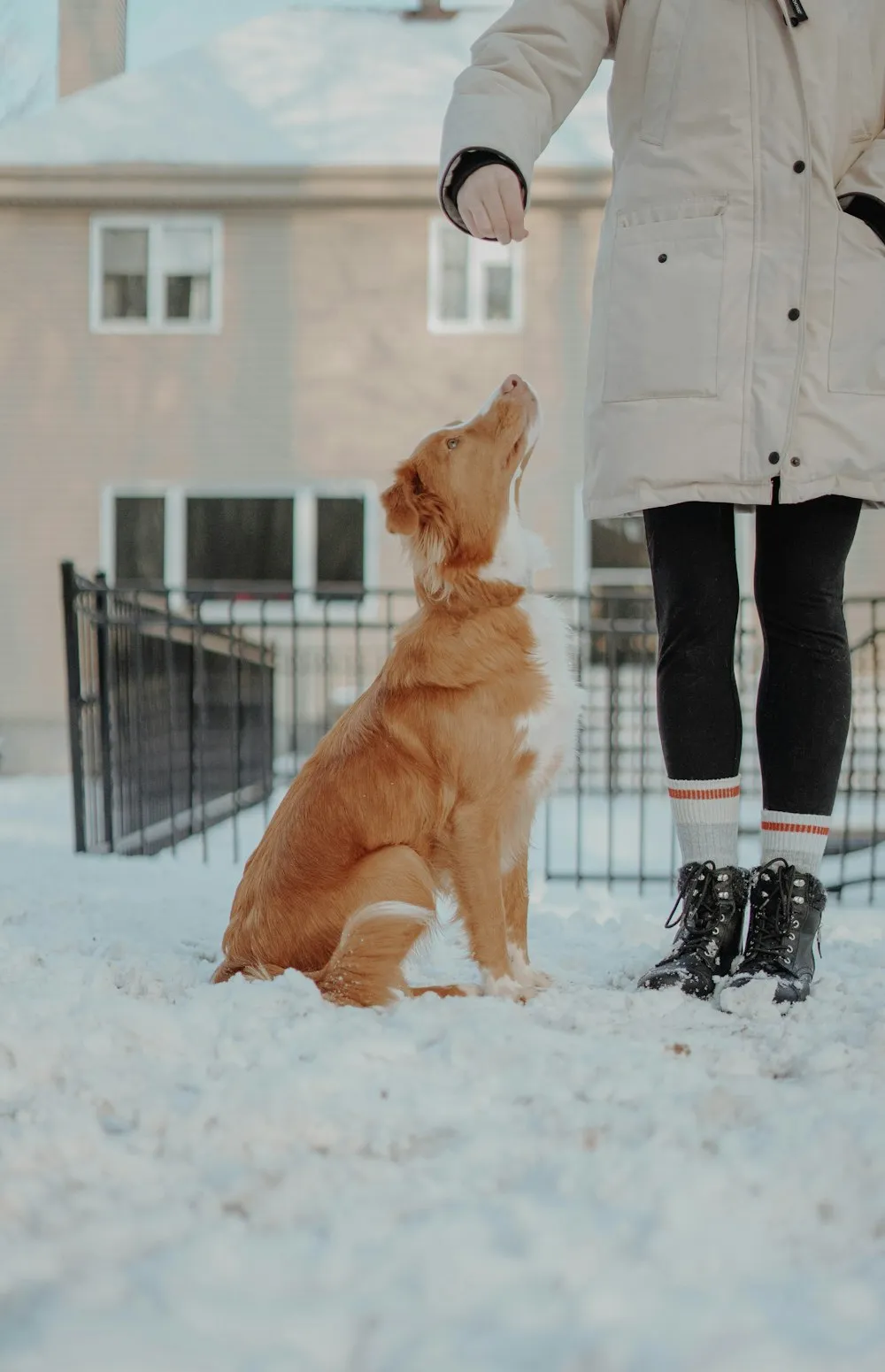While dog training can be very rewarding, it's not always easy! There are a lot of very common mistakes that almost every dog owner makes when training their pup. Luckily, Fi's dog trainer, Or Nessim, is covering the top 10 common issues that dog owners make and how to correct them:

1. Repeating a Command After Your Dog Has Not Responded to the Cue.
Repeating a command to your dog multiple times gives the dog the impression that it is acceptable to not perform the command the first time he/she is asked. When giving a command, we want our dogs to understand what the desired behavior is and to perform it on the first try. If the dog doesn’t perform the command on the first try, you can try making a sharp turn on the leash in the opposite direction and then try the command again, but this time lure the dog into doing the desired behavior. This sharp turn in the opposite direction serves as a reset button or a do-over. The dog will understand he did something incorrect and is being asked again. With the use of luring, the dog will then understand what the desired behavior is along with verbal praise once he accomplishes that command.
2. Tarnishing a Positive Command with a Negative Association
For example - Your dog has successfully learned to be in his crate while you are away. You were able to create a positive association with being in the crate and now it is his safe place. After weeks of praising him and feeding him in the cage and gradually working your way towards extended periods of time in the cage without barking or whining, your puppy is crate trained. But one day, your dog chews your favorite pair of shoes, so you send them to their crate. By sending your dog into the crate as a punishment after he has done something wrong and yelling the “crate” command, you have now tarnished a positive command with a negative association. This relates to being consistent in your responses. Always correct and praise certain behaviors the same way every time. The way you respond is crucial to the dog's understanding of what is considered a desired and undesired behavior.
3. Harsh Discipline
Harsh discipline can do more harm than good by creating a lack of confidence, aggression, and destroying all of the positive communication you’ve built with your dog. There are many different approaches in dog training and finding the right one for you and your dog is the first step in beginning to discipline your dog. Training your dog is done to create a healthy relationship while also creating an enjoyable and safe environment for the dog owner and the dog. It's built on trust and the dog owner being the valuable above all distractions and treats. Hurting your dog will do the opposite. Dogs have trouble connecting undesired behaviors with physical punishment. It will cause them to retreat and be less interested in you and the information you are trying to teach them.

4. Inconsistency
Being clear and consistent on what is right versus wrong and how we react to those behaviors is key in retaining understanding between a dog owner and his dog. If you taught your dog that chewing on your shoes is wrong and then every so often you let him chew on your shoes or you correct him in a way you haven’t before such as yelling or pulling it away, your dog will get confused and won’t understand what you want him to do. So strive to be extremely consistent with your responses. If you see your dog chewing on your shoes, use the “leave it” command you had already taught him. Praise the good behaviors and correct the bad behaviors the same way every time.
5. Inaccurate Timing of Rewards
Teaching your dog new commands or tricks is based on repetition and accurate timing of rewards. Timing the reward or praise will allow your dog to understand exactly what they are being rewarded for and what the desired behavior is. Refer to some of our other articles about how to crate train your puppy or how to walk your dog on a loose leash to understand a few scenarios when accurate timing of rewards is important.
6. Thinking One Approach is the Same for All Dogs
Just like humans, all dogs are different in what attracts them, gets their attention, scares them, and most importantly their personality. As a result, dog training isn’t “one size fits all.” Not every style of training, tip, or technique that works for one dog will necessarily work for another. One dog may be less trusting and will take time to open up while another may be extremely responsive and eager to learn and play. As a result, dog owners must learn their dogs’ personalities and build a strong relationship before attempting to understand what kind of training is right for them. A personal training plan catering to your dog’s specific needs and personality can be constructed in a way that will reach the dog owner's goals.

7. Not Training at the Right Age
Training your dog is beneficial to the dog owner and the dog. Our dogs bring us joy and companionship but if there is constant disobedience, it can become a huge source of stress for both the dog and the dog owner. We recommend to enjoy and cultivate your relationship with your dog as early on as possible. Training should begin no earlier than three months because of puppies' short attention span and lack of ability to retain information. After that age, no matter the breed or issue needed to get solved, you and your dog can benefit from some instruction and order. Your dog will be more sociable, safer around visitors, and closer to you. You can definitely teach an “old dog new tricks”, but it's ideal to begin when your dog is younger.
8. Not Being Aware of Fear and Anxiety Signals
Some cues of fear and anxiety in dogs are the tucking away of the tail, hiding away, or putting their ears back. It is important to be able to recognize if your dog is fearful because that emotion can turn into aggression very quickly. Practicing positive reinforcement-based training is a great way to ensure that your dog won't develop any fears or anxiety and will come to the session happy and willing to learn. Like humans, every dog's tolerance and pace is different so it's important to realize when it's time to take a step back and take training a bit slower so that the dog feels comfortable and is open to learning.
9. Rewarding Negative Behavior
A common mistake made when attempting to train a dog is rewarding negative behavior. Dogs crave their dog owner’s attention; therefore, negative attention is also satisfaction to them. For example, if your dog is barking or whining in his crate, yelling at him to stop is a form of attention that will reinforce your dogs barking. The dog learns that by barking, he is able to obtain your attention. Sometimes a negative behavior needs to be ignored and other times, the dog's attention needs to be redirected to something else for him to understand he is doing something wrong.
10. Long Training Sessions
Dogs have a certain attention span and when it is reached, they begin to become very restless and uninterested. They are most attentive and receptive to new information during that window of time and after that it is best to stop so that the dog doesn’t associate the information taught as something he doesn’t enjoy doing. A dog's learning environment needs to be pleasant and positive so that the dog associates it positively and remains engaged. Depending on the dog, attention spans can range between 20 minutes to one hour. Many factors can affect the longevity of their attention spans such as how active they were before the training, when they were last fed, and the environment the training is taking place in.
Conclusion:
In summary, training your dog is a nuanced process that requires patience, consistency, and a keen understanding of canine behavior. From inconsistency in commands to neglecting socialization, the mistakes owners make can have long-lasting impacts. And let's not overlook the sensory world of dogs; failing to incorporate smell, one of their most potent senses, into training exercises could mean missing out on effective ways to engage and instruct them. By being aware of these common pitfalls, you can work towards a more harmonious and well-behaved relationship with your four-legged companion. Always remember, successful training is a two-way street that benefits both you and your dog.






